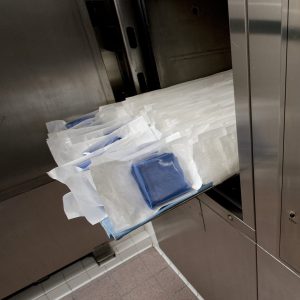When designing a biological test plan for a device, one may easily overlook details on the types of samples to be used and how they should be tested. ISO 10993-12 states that biological testing should be performed on final, finished devices that are representative of the finished product. Therefore, assessing biocompatibility should be reflective of the device as a whole. Testing the finished devices includes any potential residuals from manufacturing which may contact the patient.
There may be occasions when the raw materials used to manufacture the device have had prior testing performed by the supplier. However, when this is done on raw materials, such as pellets or coupons, the test results do not address other aspects of the manufacturing process that would otherwise be captured in the finished device. Therefore, while testing on raw materials may be used for preliminary screening to estimate potential toxicity risks, it cannot always be used as a standalone rationale to indicate biological safety of the final, finished device. In addition to final, finished devices there are other factors that need to be addressed when it comes to sample representativeness, including
- What should be sent to the testing lab for samples?
- How should the samples be tested?
For the first consideration, it has been stated that finished devices are to be provided for evaluation of the manufacturing processes. This also includes any sterilization methods to be used on the finished product. If a device is approved for multiple sterilization modalities, the representative test sample should undergo all applicable methods.
Furthermore, since biological testing should be performed based on worst-case assumptions, the harshest parameters should be used. For example, if a device is approved for a maximum of three ethylene oxide (EO) cycles and a maximum gamma exposure of 40.0 kiloGrays (kGy), then the test sample should undergo three EO cycles and a gamma cycle where it receives a minimum of 40.0 kGy; if it is approved for different EO sterilization cycles, then the one deemed the harshest should be used. Examples of the parameters that would be considered worst case may be, but are not limited to, longest EO exposure time, higher EO concentration, or highest temperature. Sterilization should be performed with the finished device in its final packaging, as this aligns with the previous statement in ISO 10993-12 to evaluate a finished device that represents what will be used in a clinical setting.

Once it has been decided on what is to be sent to the testing facility, the next consideration is how the devices are to be tested. It sounds like a simple question that the testing facility should answer. However, it is deceptively complex. Unless specific written instructions are provided to the testing facility, the devices may be cut and manipulated at the test facility’s discretion in order to fit them inside the extraction vessels. Cutting may generate particulates—which will need to be addressed in detail, sometimes with additional testing—or even expose surfaces that would never contact the patient during the intended clinical use. When a component is completely coated, the material underneath the coating would not contact the test extract. However, cutting the component exposes this material, which may in turn negatively affect the test results. For example, if a coated component made of nickel, a known sensitizer, is cut, this may cause a sensitizing reaction. Keeping the component intact would have been more representative of the exposure to the patient in a clinical setting, as only the coating material would contact the patient. Therefore, when submitting samples for extraction-based testing, it is recommended to instruct the lab to test the device intact whenever possible.
Sometimes, it is impossible to test a device without cutting or manipulating it due to its size or unique shape. If this is the case for the submitted device, clear, detailed instructions should be provided to the test facility when samples are submitted. As the previous paragraph stated, extra attention should be given to any coated components, and the number of cuts should be limited to only what is strictly necessary. Additionally, all portions that will not contact patients should be excluded. These components are not intended to contact the patient. Therefore, any potential leachables should not be included in the testing. Since the amount of test extract is determined through surface area or weight, the inclusion of portions not intended for patient contact leads to a greater volume of test extract, thereby diluting the overall extract. This underchallenges the test samples and, thus, does not assess patient safety in the clinical setting.

Such seemingly small details that have been discussed may be overlooked when it comes to the actual preparation and testing of samples for biological testing. Therefore, consideration of these factors before testing begins will help ensure that testing is performed accurately per ISO 10993-12 and that the results are considered clinically relevant.
Do not hesitate to ask the testing facility questions regarding representative devices and sample preparation. Any concerns should be communicated to the test facility prior to sample submission and testing. Addressing these questions prior to sample submission can help prevent delayed test reports or even the need for repeated testing. Nelson Labs Expert Advisory Services can offer guidance on any questions about biological test plan samples. The team can be reached at [email protected].
Learn more about the author below.



